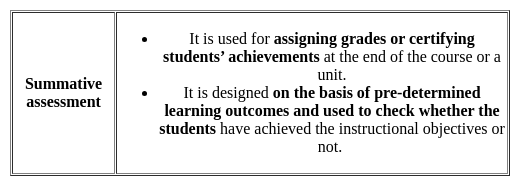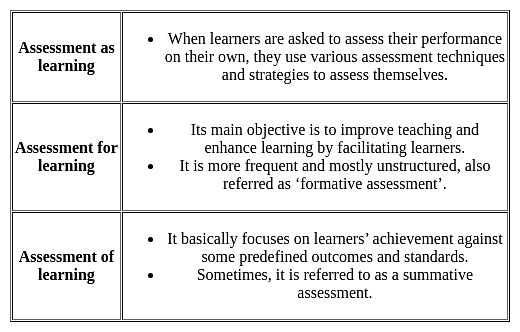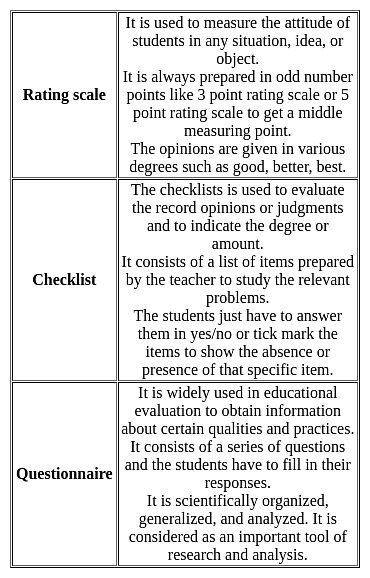Test: Education & Leadership (Assessment and Evaluation) - Software Development MCQ
20 Questions MCQ Test - Test: Education & Leadership (Assessment and Evaluation)
The most popular method of evaluating the attitude of students is-
Which assessment type is NOT related to teaching-learning process?
The most important objective of continuous and cumulative evaluation is-
Assessment for learning includes -
(i) Assessment before, during and after the teaching-learning
(ii) Self-assessment
(iii) Formal as well as informal procedures
(iv) Feedback for students and the process of teaching-learning
Which approach to assessment is formative rather than summative?
What are used to record specific observations of individual student behaviours, skills and attitudes as they relate to the outcomes in the program of studies?
Which of the following characteristics of achievement tests is ensured by the process of standardization?
I. The tasks used are deliberately designed to measure clearly defined areas of performance.
II. Standardized procedures are used for the submission, scoring, and interpretation of test results.
How does peer assessment help students?
I. Organize your learning by talking and interacting with your classmates.
II. Learn how to give and receive constructive, specific feedback based on clear criteria.





















